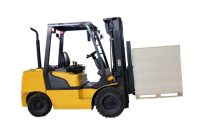Category: Special Topics in Safety Management
Safety is a process, and as such, needs to be managed. This section offers resources to create a viable safety program, sell it to senior management, train supervisors and employees in using it, and then track and report your progress. Look also for ways to advance your own skills in these areas, both for your current job, and those that follow.
OSHA requires authorized and affected employees to be properly trained in lockout/tagout requirements and procedures. Do your employees have the knowledge they need to prevent deadly accidents? Here’s a true story excerpted from BLR’s Interactive CD: Lockout/Tagout that dramatically illustrates to employees why lockout/tagout is so important. Laundry Worker Fatally Injured A laundry worker propped […]
Whenever machine maintenance or repairs are performed by a group of employees, you must develop and implement a group energy control procedure that provides the same level of protection as a personal lockout or tagout device. Machine maintenance and repair operations performed by a group of employees are often more complex than similar operations performed […]
Winter is here—well, technically not until December 21, but the cold weather has already arrived. For the next few months, many workers will be required to work briefly or for sustained periods in cold weather conditions and will face the special hazards that such work entails. The two main health hazards of overexposure to cold […]
December is National Drunk and Drugged Driving Prevention Month and Mothers Against Drunk Driving’s (MADD) Tie One On for Safety event occurs between Thanksgiving and New Year’s Day, during which time more than 1,000 people die in traffic accidents nationally. What better time to talk to employees about impaired driving? National Drunk and Drugged Driving […]
Yesterday, we talked about the use of face masks and respirators to protect against H1N1 exposure. Today, we expand our discussion to include the use of respiratory protection in general, as well as other types of personal protective equipment (PPE) designed to protect against an array of workplace hazards. Respiratory protection is an important part […]
Are face masks or respirators really necessary to protect against H1N1 at work, on the street, or at home? That’s the question on the minds of a lot of people these days. See what CDC recommends. If you’ve been wondering about whether to use a face mask or a respirator to protect against the H1N1 […]
If you don’t investigate today’s near-miss incident, you’re not going to prevent tomorrow’s accident. And, because you can’t examine what you don’t know about, make sure you can rely on employees to report all incidents. Near-miss incidents (or “close calls,” as they’re also often dubbed) are leading indicators of safety performance. A “leading indicator” is […]
According to the National Safety Council, 75 percent of all accidents are preceded by one or more close calls. The difference between a close call and an accident might be a fraction of an inch or a split second of time. Either way, a close call is a call to action. . There are few […]
Yesterday, we reviewed a selection of forklift questions that were answered by the safety experts at Safety.BLR.com®. Today, we continue with more forklift questions and answers, and we’ll take a closer look at a powerful forklift safety training tool that can help ensure that your forklift operations always comply with OSHA requirements. Q. Is there […]
Forklift operations raise many safety issues for employers. There’s a lot to know about OSHA requirements, and not all of it is well-known. Many of your colleagues have turned to our safety experts for answers to their safety forklift questions. Here’s a sample of interesting forklift questions sent in to our sister website, Safety.BLR.com®, where […]

